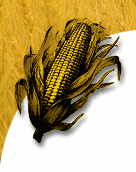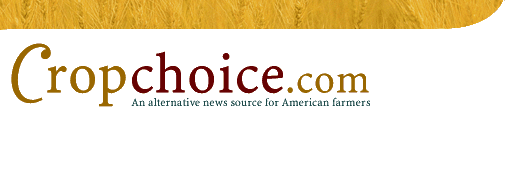

  |
|
|
Good soil is far more than just dirt Also on CropChoice:
By George B. Pyle
Editor's note: This is a longer version of the piece that ran recently in The Los Angeles Times.
(Aug. 16, 2002 -- CropChoice guest commentary) -- Even when city folks notice the dwindling population of rural areas and express concern for the dying small communities scattered across the continent, they remain blind to both the real causes and the best solutions. They are blind because they have bought the lie that the industrialization of food production is both inevitable and good, and that the only problem is finding new uses for the surplus rural population.
Thus an editorial in the July 8 Los Angeles Times, commenting on a July 2
front page article in that same newspaper about the rapid decline of rural
communities and proposals for what to do about it. In "The Ever Quieter
Country," the Times gave its official sympathy to the afflicted communities,
and offered the comfort of modern technology, communications technology that
could employ, in call centers and data-entry pools, eager, and cheaper,
workers no longer needed in agricultural-related pursuits.
What about the food those people used to produce? Not to worry, the Times
opined. "The fields are doing fine."
No, they're not.
It is, of course, no coincidence that rural life is decaying right alongside
the devastation of America's fields. It's just that the people, even when
there are far fewer of them, can still complain to congressmen and to
newspaper reporters. The fields cannot speak up, and so their victimization
goes mostly unnoticed.
For one thing, the fields are much lighter than they used to be. Wind and water erosion
alone wash away 2 billion tons of soil, or 5.6 tons per cultivated acre,
each year, according to the latest figures available (1997). It has been figured that, for every ton of grain and hay harvested in the U.S., we lose 2.5 tons of soil.
And, as it washes away, the soil takes with it tons of nitrogen fertilizers,
pesticides, herbicides and other chemicals that poison the waters
downstream, require more expensive water treatment facilities in cities and
are the cause of large areas of oxygen-starved, fish-destroying "dead zones"
in coastal waters.
Not only are our fields losing quantity, the remaining soil is of
ever-decreasing quality. The soil that is left is ripped up to produce a
season of genetically identical, chemical-dependent crops, then left bare
for much of the year, exposed to wind and rain. Like a drug addict who loses
the ability to feel normal life without chemical stimulus, modern
agriculture has so fried the soil that it cannot produce without larger and
larger infusions of chemicals.
Water poured onto arid fields quickly evaporates, leaving behind increased
amounts of salt that only reduce the future ability of the soil to produce.
All that accelerates soil degradation and requires ever more fertilizer and
other chemicals to make up for the natural nutritional value of soil that
has been wiped away by modern, high-intensity agriculture.
Good soil is not just dirt. It is a hive of life, much of it either
microscopic or even disgusting to urban eyes because they don't understand
the need for the growth and decay of slimy things to sustain life. Good
farmers are not just people who dig in the dirt. They are the stewards of
healthy soil, many of them unrecognized or even dismissed by urbanites
because they don't understand why anyone would want to do such hard work so
far away from the nearest Starbucks.
Because it takes fewer people to beat the Earth into submission than it does
to lovingly care for it, fewer farmers are producing more food, and fewer
rural communities survive to support and be supported by those farmers. But
it cannot last. And the final effects will be felt far from the fields, into
the deepest urban canyons.
Many city dwellers seem to feel we would be doing farmers a favor – and
ourselves no harm - by turning them into computer pieceworkers. But the fact
is that fewer people on the land is both cause and symptom of degraded land,
land that is rapidly losing its ability to produce healthy food, now and
into the future.
- George B. Pyle is a director of The Prairie Writers Circle, a project of
The Land Institute, a Natural Systems Agriculture research organization in
Salina, Kan. He is writing a book about the advantages of small-scale
agriculture over the industrial model of food production. | |